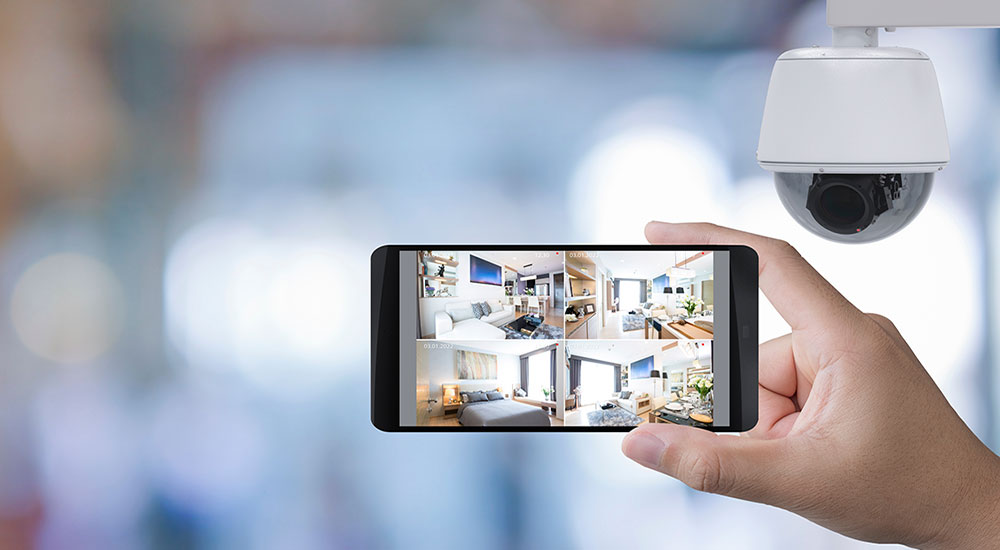Campus safety has long been a priority, but the approach is rapidly evolving. As of the 2021-2022 school year, over half of U.S. public schools implemented advanced security measures. However, with a 37% rise in cyberattacks targeting educational institutions in 2024, it’s clear traditional methods aren’t enough. Schools are turning to mobile-integrated security systems for real-time monitoring, faster responses, and smarter decision-making.
Traditionally, security teams would rely on fixed stations and review footage after an incident. Now, mobile-integrated systems allow security personnel to access live video feeds and alerts directly on their phones or radios, enabling them to react in real-time.
This shift offers greater flexibility. Whether it’s an unauthorized entry, medical emergency, or a suspicious event, mobile security tools allow immediate action. This means officers can see what’s happening and respond promptly which improves the overall security response time.
Smarter Access Control with Mobile Credentials
Managing access to a campus has always been an evergreen challenge. The adaptation of mobile credentialing systems are now replacing traditional key cards and manual checks, allowing students, staff, and visitors to access buildings using their smartphones, enhancing campus safety measures.
RELATED: The Many Ways Mobile IDs Can Revolutionize College Campus Life
This technology is more convenient and reduces the risks associated with lost or stolen cards. It also allows schools to easily grant or revoke access as needed. Additionally, mobile access systems automate the check-in process, reducing staff workload while amplifying security.
Video Surveillance That Balances Security and Privacy
The conversation about surveillance is continuing to shift. While privacy was once a significant concern, many now recognize the need for enhanced security measures is taking precedent. Using mobile-accessible video surveillance enables security teams to monitor footage remotely, ensuring flexibility without compromising privacy on campus.
RELATED: Security Industry Embracing Mobile Credentials, Biometrics and AI, HID Study Reveals
Applying strategic camera placement and clear policies also allow schools to maintain security while respecting personal boundaries, ensuring a safer, more transparent environment for everyone.
Overcoming Challenges Schools Face with Mobile Security Systems
Despite the advantages, implementing mobile-integrated security can be costly. Larger campuses may have the resources to support these advanced systems, while smaller schools may struggle with funding and staffing. Cloud-based security systems are helping bridge this gap by offering more accessible, cost-effective solutions without the need for expensive on-site infrastructure. Additionally, many modern systems are equipped with built-in battery backups, ensuring continued operation even during power outages.
AI-Powered Security: A Smarter Approach to Threat Detection
Artificial intelligence is revolutionizing campus security by automating threat detection. AI systems analyze video feeds to identify unusual behavior by triggering alerts for security personnel to begin investigating. Additionally, AI-driven security automation is improving response times through proactive measures such as locking doors during emergencies, adjusting surveillance settings based on activity, and even predicting potential threats before they escalate.
Cybersecurity and Protecting Campus Security Systems
With more security systems going digital, protecting them from cyber threats is a concern of many and critical to combat as a compromised security system is just as dangerous as an unlocked door.
RELATED: New Reports Highlight Top Risks for K-12 Schools, Colleges
Therefore, schools should consider keeping security systems on separate networks from student and faculty Wi-Fi to protect them from cyberattacks. Separating networks as much as possible helps alleviate the severity of a potential attack and holding staff training in cybersecurity best practices is also crucial to maintaining the integrity of these systems.
What’s Next for Campus Security?
As technology evolves, we can expect further advancements in campus security. AI-driven credentialing will automate access control, voice-activated security systems will allow hands-free management, and automated systems will continue to make campuses safer and more efficient.
As mobile technology continues to make campus security smarter, stronger, and more adaptable than ever, the goal is to not just react to threats, but to stay ahead of them to ensure a safer environment for students, staff and parents.
Eric Benson is CEO of Benson Systems, a security and fire and life safety solutions provider.
NOTE: The views expressed by guest bloggers and contributors are those of the authors and do not necessarily represent the views of, and should not be attributed to, Campus Safety.







